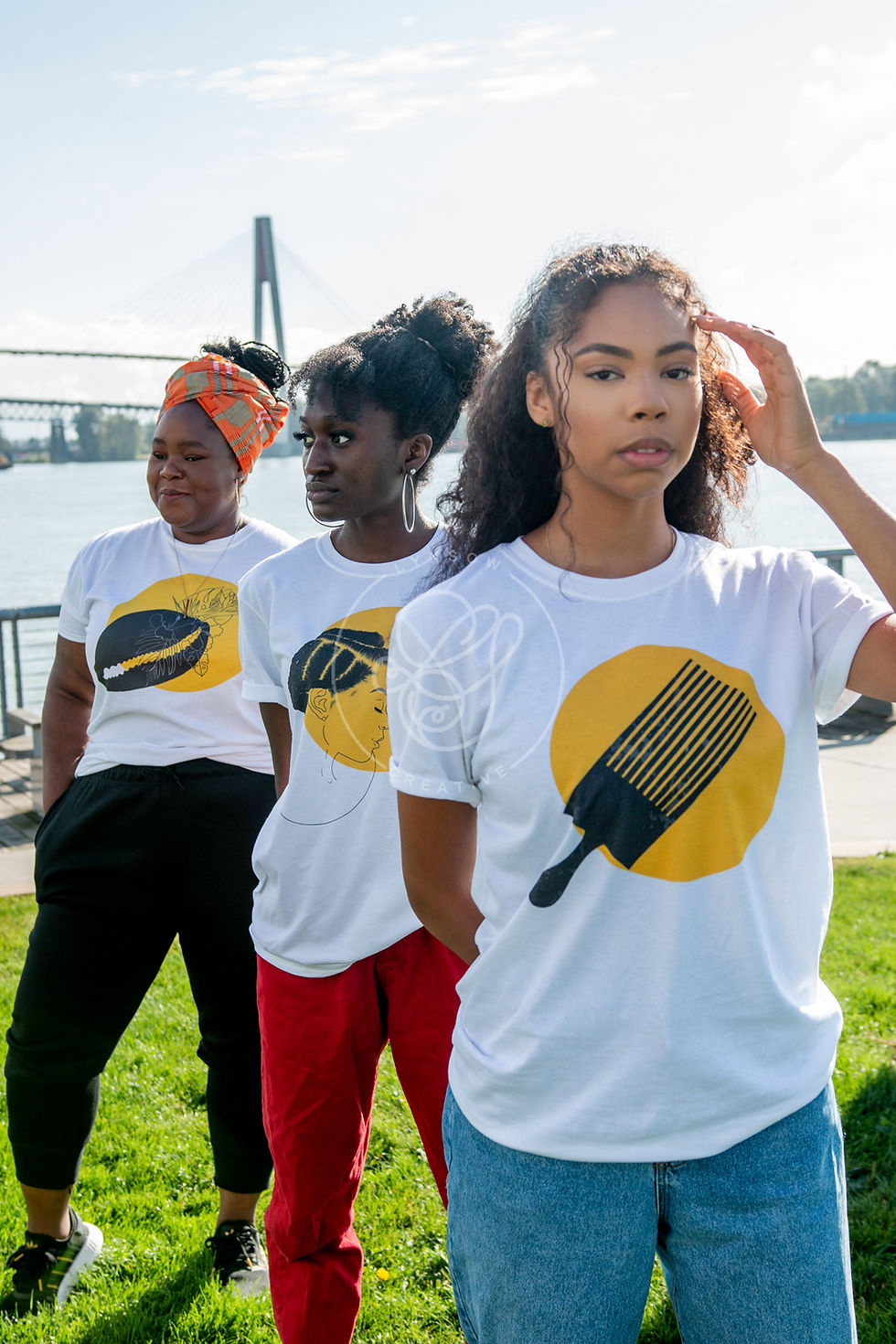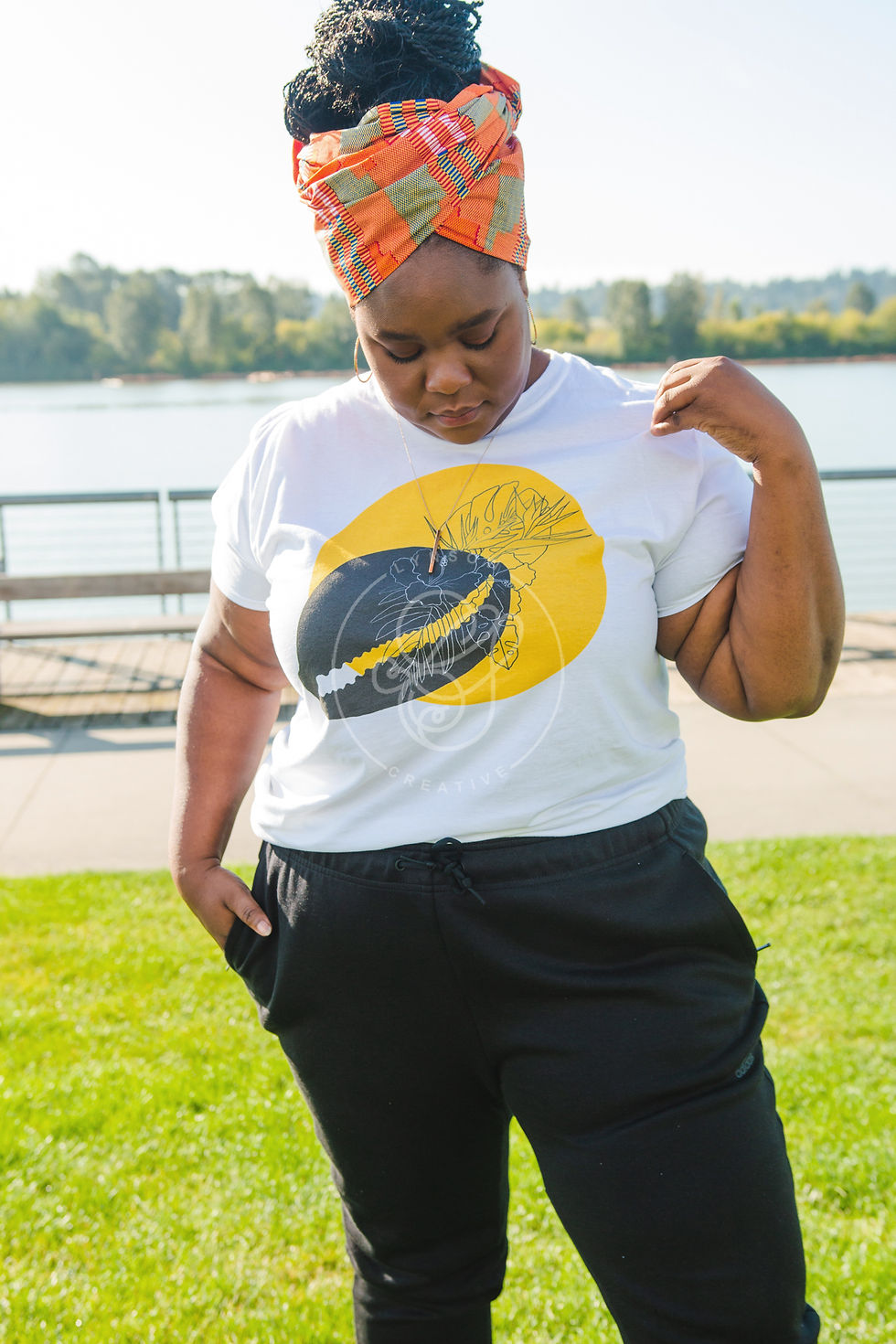IAO Collection – LynSow Creative Capsule Collect I
- Dorcas Markwei

- Sep 2, 2020
- 4 min read
Updated: Jul 20, 2021
This year marks a lot of things, among which is another turning point for the black diaspora towards social change. In the midst of this transition, I find myself being more intentional about my education and exposure to the culture – familiarizing my senses each day with the struggles, bravery, failures, triumphs, and everything in between. I am redefining what I want to consume – refining what is fed to me in my physical and digital space each day - not only to build my awareness, but also to affirm what is inherent in me and find hope in our pursuit for positive change. This is a feeling that is common to many of us (black and non-black people), as we take steps toward amplifying injustices, supporting uplifting movements, and practicing true allyship. For us, all of our actions find unity in the hope of a better tomorrow.
The IAO capsule collection, the title of it being “In Acknowledgement Of…”, was birthed with the intention to further expose us (black and ally alike) to the culture and celebrate that hope. The symbolic triad of artworks that I’ve created are intended to highlight certain aspects of the black diaspora culture that I have found myself connecting with – recognizing the shift in what we value and how we perceive certain concepts as a culture.

The collection provides symbolic excerpts in acknowledgement of the following:
The Self

This symbol is in acknowledgement of the movement towards building The Self.
I came across a poem composed by the wonderful Theresa tha SONGBIRD. Each word in the poem, delivered with such gusto, is a celebration of The Self. The poem inspires one to look at themselves, as a black person, not in a biased mirror or a predisposed lens, but to truly look at themselves as they are in such a way that provokes pride. This poem, is a reminder of the composition of the The Self.
The words, that are ever so eloquently put, carry even more power in their delivery when heard from the mouth of the spoken word artist herself.
The Culture

The African continent before colonization carries a history that eluded me growing up. I had focused more on the struggles that came with Colonialism, and the determination that led my country (Ghana) out of it. I had somehow managed to store up, on a subconscious level, the history of Africa beginning only from that point; forgetting what little was taught about the pre-existing empires that flourished as civilizations before then.
That portion of Africa's history bears just as much importance as it provides a representation of advancement and forward thinking that lets me realize our inherent creative and innovative culture. The representation of the black diaspora in that light bears much importance to me as I have come to find how powerful representation is to a culture. If we see people like us being creative and innovative, we start to see that same possibility in ourselves. If ALL people start to see this representation, we develop a new and positive respect for black culture on a conscious and subconscious level.
The afro comb has long symbolized the inventiveness and innovative capacities of the black diaspora culture. The handles of the afro comb have, over the years, been adorned with motifs, human figures, and natural elements that artistically represent cultural concepts within the culture.
The “black fist”, being the most popularized symbol attached to the afro comb in the last 20th century, took on both a cultural and political meaning for the culture. In addition to using it as a styling tool, many black men and women wear the picks in their hair as a way to express their cultural pride.
This symbol of the afro comb is in acknowledgment of The Culture.
The Economy

My connection to the shell utilized in this symbol stems from the cedi. The national currency in Ghana, is the Akan (Twi) word for “cowrie”.
The cowrie shell coexisted with many other forms of currency across West Africa: including salt bars, brass and copper rods, gold dust, silver coins, cloth, beads, and other forms of currency. Africans participated in extensive international trading networks, using a various forms of currency, with India, China and other parts of Asia long before European intervention.
By the 18th century, the cowrie had become the most popular form of currency along the trade routes of West Africa. It conserved its status as a means of payment, and a symbol of wealth and power, until the 20th century when Colonizers introduced banknotes as a centralized form of currency.
My response to the African economy from history and experience has always leaned towards frustration about the misunderstanding of value that has largely contributed to the decline in the African economy and the limitations that exist as a result of misconceptions about black owned businesses. This misunderstanding continues to exist and is prevalent throughout the diaspora as a result of the lack of education concerning economy, and the markets lack of confidence in black owned brands.
Hope towards improvement is however not lost to me, as a recognizable shift towards education on how to manage money and the significance of ownership has emerged over the past few years. The support for black owned businesses is a movement that is gradually picking up pace, as we each aim to support the other in breaking generational patterns and misconceptions. This symbol is in acknowledgement of the movement towards building The Economy.

Fashion has long been a canvas for communicating a shift from the status quo. Consider the fashion movement of the 70s that was encompassed by attitudes of younger generations supporting peace and equality. From black berets, to camouflage army clothing, miniskirts, and more casual work apparel; the fashion of the 70’s presented a silent protest as an addition to the loud movement towards the need for change. As famously said by fashion editor Diana Vreeland, “You can see an approaching revolution in clothes; you can see everything in clothes”. For as we have seen through history, fashion contributes to culture by affirming, or disrupting, the status quo.









Comments